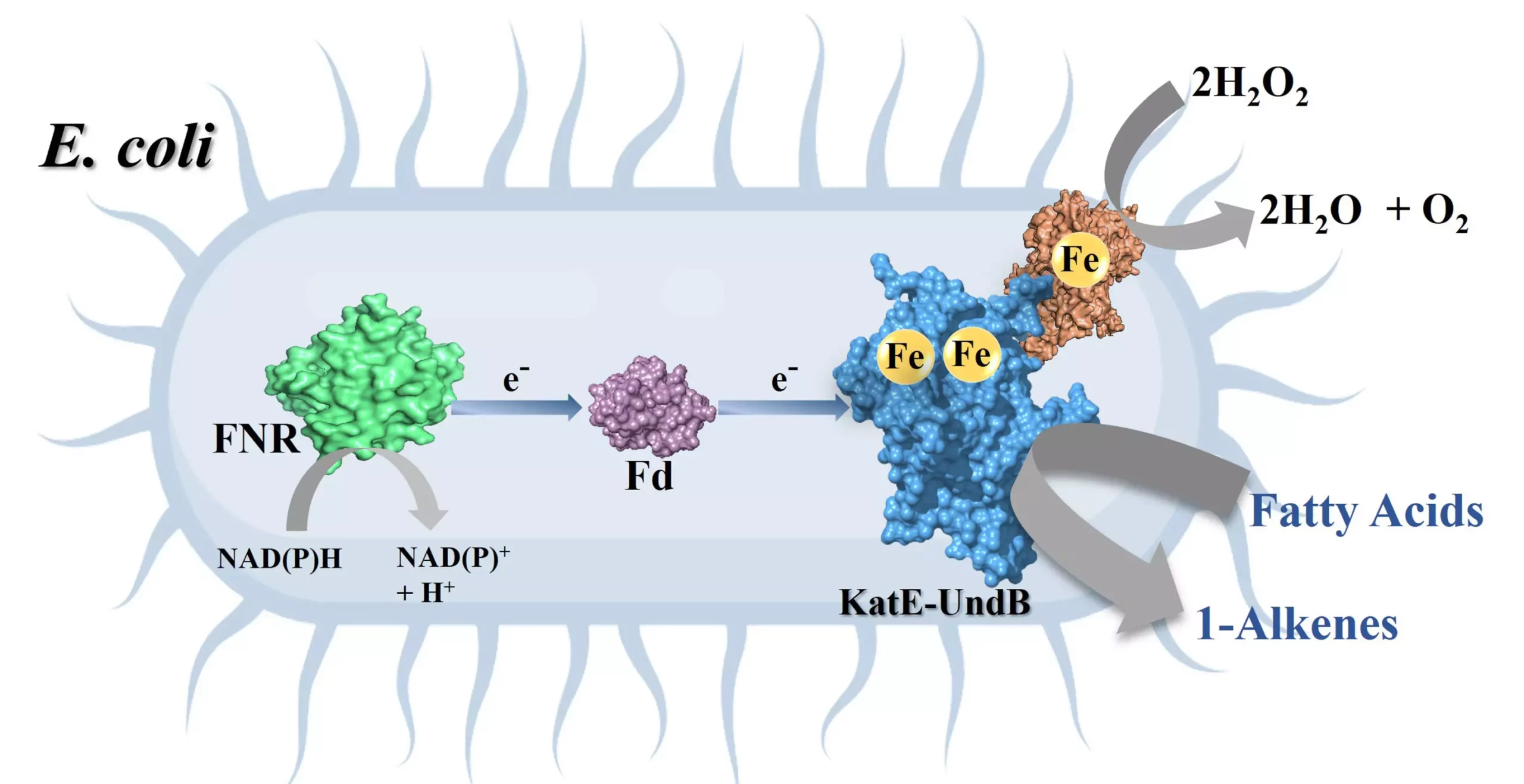As the world grapples with the environmental impacts and depletion of fossil fuels, the quest for sustainable energy sources has never been more urgent. Traditional fossil fuels contribute significantly to air pollution and climate change. In response, scientists are investigating alternative energy pathways that harness naturally abundant resources to create energy-rich hydrocarbons. Among these, biofuels produced from fatty acids have emerged as a promising solution, offering the potential to create “drop-in” fuels that seamlessly integrate into existing energy infrastructures without the need for extensive modifications.
Research teams worldwide are capitalizing on the unique abilities of microorganisms to transform raw materials into valuable byproducts. The enzymatic conversion of fatty acids to hydrocarbons, particularly 1-alkenes, exemplifies this innovation. Unlike other energy sources, biofuels derived from 1-alkenes can be blended with conventional fossil fuels, representing a crucial step toward energy sustainability.
Enzyme Optimization: The Key to Enhanced Production
At the forefront of this research is a groundbreaking study conducted at the Indian Institute of Science (IISc). The team from the Department of Inorganic and Physical Chemistry (IPC) has made significant strides in optimizing enzymatic reactions to enhance the efficiency of hydrocarbon production. By targeting an enzyme known as UndB, which has the remarkable capability to convert fatty acids to 1-alkenes, the researchers have unlocked new potential in biofuel synthesis.
However, the initial experiments revealed obstacles to practical application. The enzyme UndB, while efficient, suffered from reduced activity due to the accumulation of hydrogen peroxide (H2O2), a toxic byproduct of the enzymatic reaction. This challenge brought researchers back to the drawing board, where they focused on integrating additional enzymatic solutions to mitigate the inhibitive effects of H2O2. By employing catalase—a well-known enzyme that degrades hydrogen peroxide—the IISc team was able to significantly enhance the catalytic efficiency of UndB, achieving an impressive 19-fold increase in productivity.
Advancements in Fusion Proteins and Whole Cell Catalysis
The revelation that combining UndB with catalase could lead to better performance inspired the researchers to pursue the creation of a fusion protein. Using innovative genetic engineering techniques, they introduced plasmid-based fusion constructs into E. coli bacteria, effectively turning these microorganisms into biocatalysts capable of large-scale production of 1-alkenes. This “whole cell” approach not only optimized the reaction conditions but also opened avenues for maximizing enzyme performance by leveraging the inherent metabolic capabilities of the host organism.
Despite the substantial progress, the research team faced additional hurdles specific to the nature of membrane proteins like UndB, which are notoriously difficult to manipulate and can exhibit toxic effects on bacterial cells at high concentrations. To overcome this, they explored the influence of various redox partner proteins, ultimately identifying candidates that effectively facilitated electron transfer to UndB during fatty acid conversion. The incorporation of ferredoxin and ferredoxin reductase along with NADPH proved to be the ideal combination, resulting in a staggering 95% conversion efficiency—a noteworthy achievement that could transform the landscape of biofuel production.
The Impact of Pure Biocatalysts on the Biofuel Industry
The implications of this research extend far beyond academic curiosity; the scalability and specificity of the engineered biocatalysts present a vital advantage for the biofuel industry. As the IISc team demonstrated, the purity of the products—predominantly 1-alkenes without unwanted byproducts—underscores the potential for these biocatalysts to meet stringent industry standards. Moreover, their ability to convert various types of fatty acids into valuable hydrocarbons positions this technology as a versatile solution for diverse applications, from fuel production to the synthesis of industrial chemicals such as styrene.
The team’s commitment to commercial application is evident as they pursue patent protections for their discoveries and seek partnerships with industry leaders to scale up the production process. As interest in green technologies grows, the work of the IISc researchers exemplifies the intersection of scientific ingenuity and environmental necessity, presenting an optimistic vision for the future of biofuels and the overarching goal of a sustainable energy landscape.
The advances in enzymatic biocatalysis illustrate the remarkable potential within nature’s own systems. By optimizing these systems for industrial use, researchers not only pave the way for innovative solutions to energy challenges but also challenge the traditional paradigms in the ongoing search for sustainable futures.


Leave a Reply